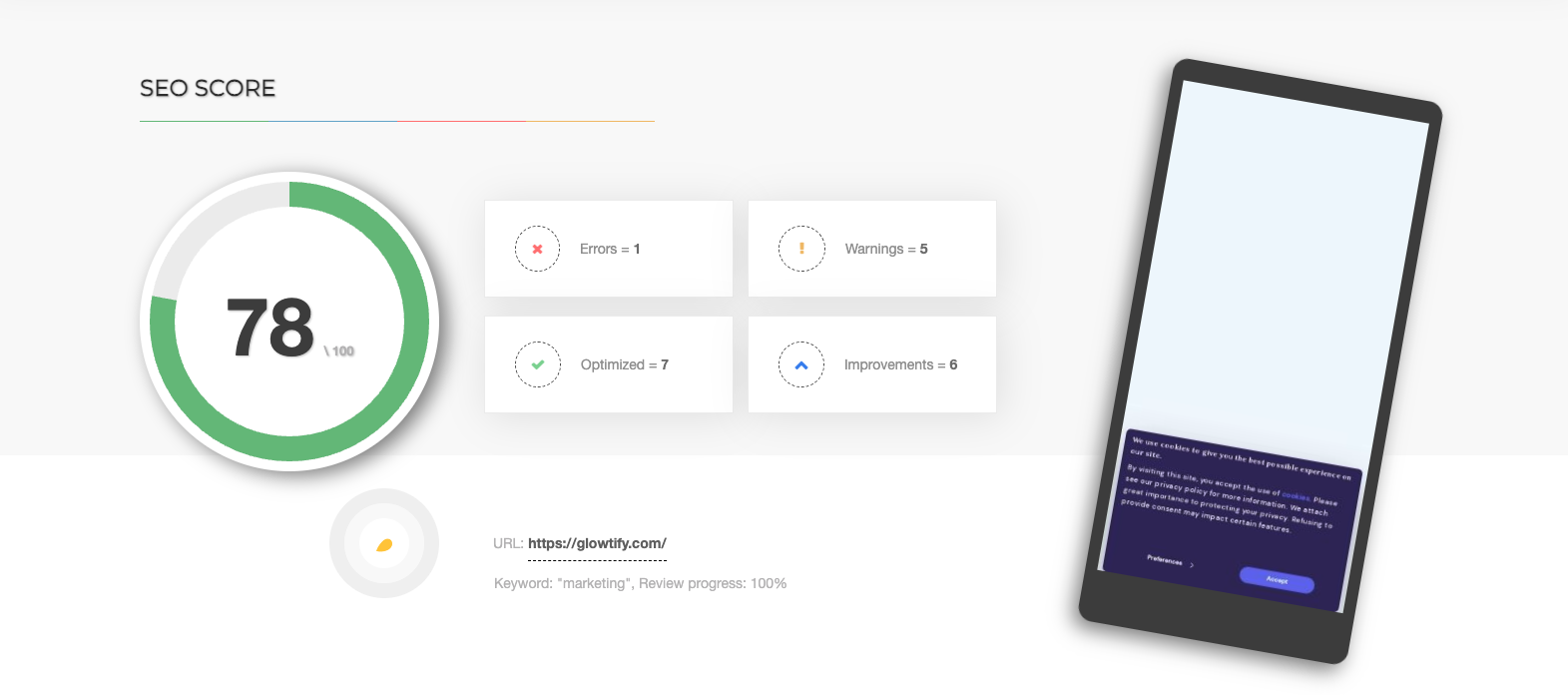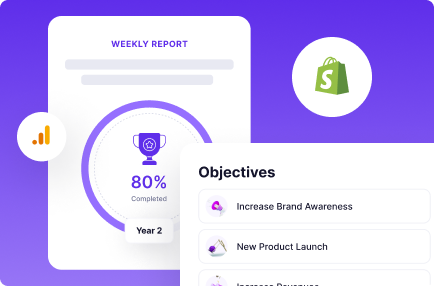Table of Contents

Planning is vital for any business, and an online marketing plan is no different. You need to set realistic goals and objectives for your campaigns and map out the steps you will take to achieve them.
According to SEJ, over 50% of small businesses don’t have a formal marketing plan, which means they miss out on valuable opportunities to reach and engage with their target audience.
However, with so many different moving parts to an online marketing campaign, it can be difficult to know where to start. That’s why we’ve put together this handy online marketing planning guide, which will walk you through the steps of creating a comprehensive and effective plan for your business from marketing calendar and project management to selecting marketing channels and assign tasks. We’ll also mention some free marketing planning software you can use to make the process faster.
What Is a Digital Marketing Plan?
A digital marketing plan is a document that outlines the online marketing initiatives and activities for a business. It can be used for small and large businesses and is generally created by the marketing team in consultation with other departments.
The plan should detail the marketing strategies and tactics used to achieve the desired results, as well as performance indicators and budget allocation. It should also set out a timeline for implementation and identify who is responsible for each task.
What is not a digital marketing plan?
A one-page document with a list of social media platforms on which you want to be active. Your digital marketing plan needs to be much more comprehensive than that.
Now that we’ve cleared that up let’s look at how to create an online marketing plan to help you achieve your business goals.
10 Steps to Creating Your Online Marketing Plan
Since we’re focusing on online marketing in this guide, we’ll use the terms “digital marketing plan” and “online marketing plan” interchangeably.
Your Budget: What Does the Market & Competition Look Like?
To create a good digital marketing strategy, it’s important first to understand the environment you are working in. In order for this process of understanding your competition and finding strengths, weaknesses, opportunities, threats, etc., it’s important first to understand your budget for marketing.
When evaluating your competition, the two key elements to look at are their marketing mix and digital marketing strategy.
A company’s marketing mix is the product, price, promotion, and place (distribution) the company uses to market its products or services.
To get an idea of what your competitors are doing well and where they could improve, take a look at their marketing mix.
- Do they have a strong product offering?
- Are their prices competitive?
- What kind of promotion are they using (e.g., discounts, coupons, etc.)?
- How easy can customers find and purchase their products or services?
Understanding your competition’s marketing mix will help you make decisions about your own marketing mix.
In addition to looking at their marketing mix, you should also take a look at their digital marketing strategy.
- What kind of presence do they have online?
- How are they using social media?
- What kind of content are they producing?
By understanding what your competitors are doing online, you can decide your digital marketing strategy.
Your Target Audience
Now that you understand your competition and have a good idea of the market you’re operating in, it’s time to start thinking about your target audience.
A target audience is a group of people you want to reach with your marketing.
Demographics are one way to segment a target audience. Some common demographic segments include age, gender, income, location, and job title.
In addition to demographics, you can also segment your target audience by their interests, needs, and wants.
To better understand your target audience, you can create buyer personas.
A buyer persona is a fictional representation of your ideal customer.
To create a buyer persona, you’ll need to answer questions about your ideal customer’s demographics, interests, needs, and wants.
Once you understand your target audience, you can start thinking about how to reach them.
Goals & Objectives
Even every small business should have a goal, but too many businesses don’t.
A business without a goal is like a ship without a rudder—it’s likely to get lost.
Before you start thinking about how to market your business online, you must first set some goals and objectives.
Goals are the broad targets that you want to achieve with your marketing.
Some common goals for small businesses include:
- Generating leads
- Increasing brand awareness
- Increasing website traffic
- Increasing customer loyalty
- Converting website visitors into customers
- Selling products or services online
Tip: If you want to be successful, your online goals should support and reflect your business strategy.
The SMART acronym is helpful to remember when you are determining the goals for your marketing plans:
- Specific: The goal should be specific and clear. ·
- Measurable: The goal should be able to be measured so that you can track progress towards it.
- Achievable: The goal should realistic and achievable.
- Realistic: The goal should be something that you can realistically achieve given your resources.
- Time-bound:The goal should have a deadline attached to it so that you can stay on track
Strategy and Creativity
It takes more than a great product or service to be successful online—you also need a solid marketing strategy.
Your marketing strategy should include attracting website visitors, converting them into leads, and turning those leads into customers.
It’s also important to think about how you’ll differentiate your business from your competitors.
You’ll need creativity, analysis, and personalization to create a successful online marketing strategy.
After you establish your strategy, it’s time to add creativity for a more significant impact that will be remembered..
The Sales Process
The next step in the process is to determine your digital sales strategy. You’ll want a series of steps that users will go through on your website before they become clients. If you’re not an eCommerce business, this could mean lead generation or other methods for linking online communication efforts with actualizations (online purchases) offline.
You’ll also want to consider how you’ll track conversions from your online marketing activities. A conversion is when a user takes a desired action on your website, such as signing up for a newsletter or making a purchase.
There are a number of free and paid tools that you can use to track conversions.
Once you have your sales process in place, it’s time to start thinking about how you’ll make your customer’s journey as seamless and easy as possible.
Website User Experience (UX)
User experience (UX) is how users interact with and feel about your website.
Good UX aims to create a website that is easy to use, informative, and visually appealing.
This point will also boost your customer loyalty and their likelihood of returning to your website and doing business with you again.
It’s important to note that the design of your website is just one part of the user experience.
Other factors that contribute to UX include:
- Navigation
- Content
- Calls to action
- Forms
- Layout
- Speed
Formulate Marketing Budget
As an online marketer, you’ll need to have a firm understanding of your budget and costs.
This will help you make informed decisions about where to allocate your resources.
Some common costs associated with online marketing include:
- Domain names
- Web hosting
- Website design and development
- Search engine optimization (SEO)
- Content marketing
- Social media marketing
- Pay-per-click (PPC) advertising
- Email marketing
- Web analytics
It’s important to note that these costs can vary depending on your specific needs.
For example, if you’re just starting out, you may not need to invest in a full-fledged website design.
You can also save money by doing some work yourself, such as SEO or social media marketing.
Once you have a general understanding of your costs, you can start to formulate a budget.
Use Technology
Thanks to the advancement in technology, you can use several different tools to help with your online marketing efforts.
It can save you a lot of human resources by automating your marketing tasks.
Tools can help with a variety of tasks, such as website design, content creation, SEO, social media marketing, and much more.
Some popular marketing automation tools include:
- Hootsuite
- Buffer
- CoSchedule
- HubSpot
- Marketo
- Salesforce
- Pardot
Analyze Your Marketing Activity & Adjust Accordingly
After implementing your online marketing strategy, it’s important to analyze the results. This will help you understand what’s working and what’s not.
There are a number of different metrics or KPIs that you can track, such as website traffic, leads, and sales.
You can use Google Analytics to track your website metrics.
This free tool provides a wealth of data about your website and its users.
It’s important to regularly check your analytics so that you can make necessary changes to your online marketing strategy.
Make sure to set aside time each week or month to review your analytics.
This will help you fine-tune your strategy and ensure that you’re achieving your desired results.
Top Online Marketing Planner Softwares
There are a number of different online marketing planner tools that you can use to help with your marketing & media planning efforts. Some popular options include:
Percolate – Best Marketing Planning Software

MarketPlan.io

BrandMaker

Wrike

Never Let Your Online Marketing Planner Become Stagnant
Once you have your online marketing plan in place, it’s important to review and update it regularly with your marketing teams. This will ensure that your plan stays relevant and up-to-date.
Make sure to set aside time each quarter or year to review your plan. This will help you identify any areas that need to be updated or revised.

Want more SEO traffic?
Discovering the secret to increasing your website’s traffic could be as simple as accessing this Free SEO analyzer tool!
Try it - it's free

